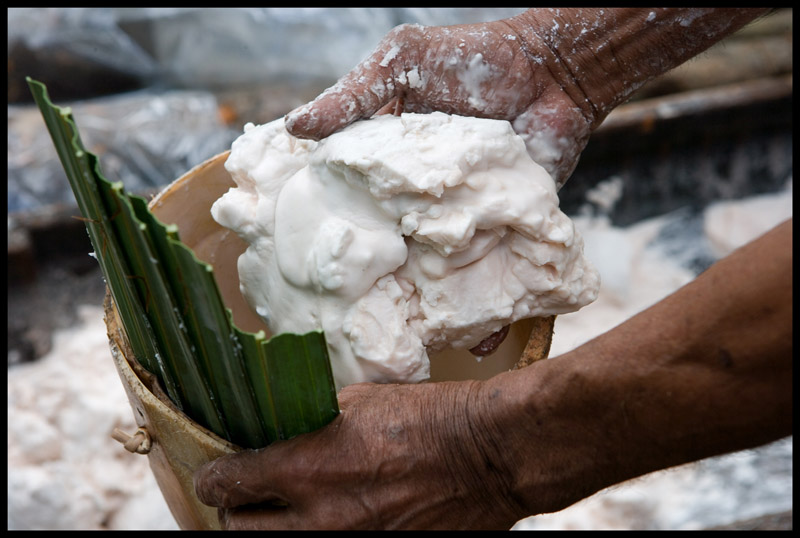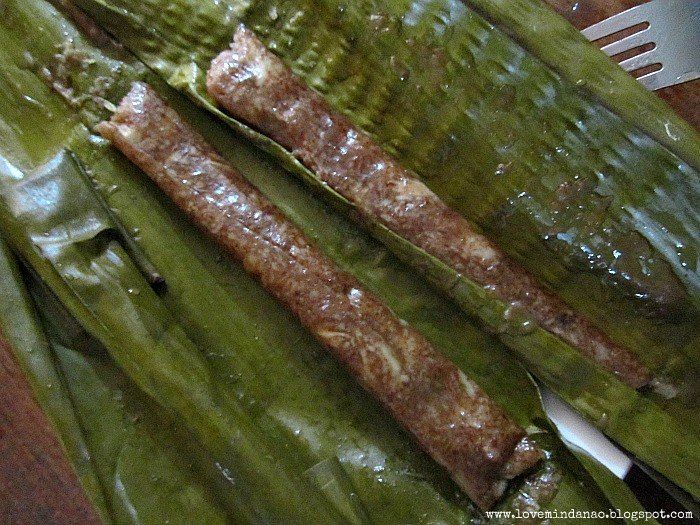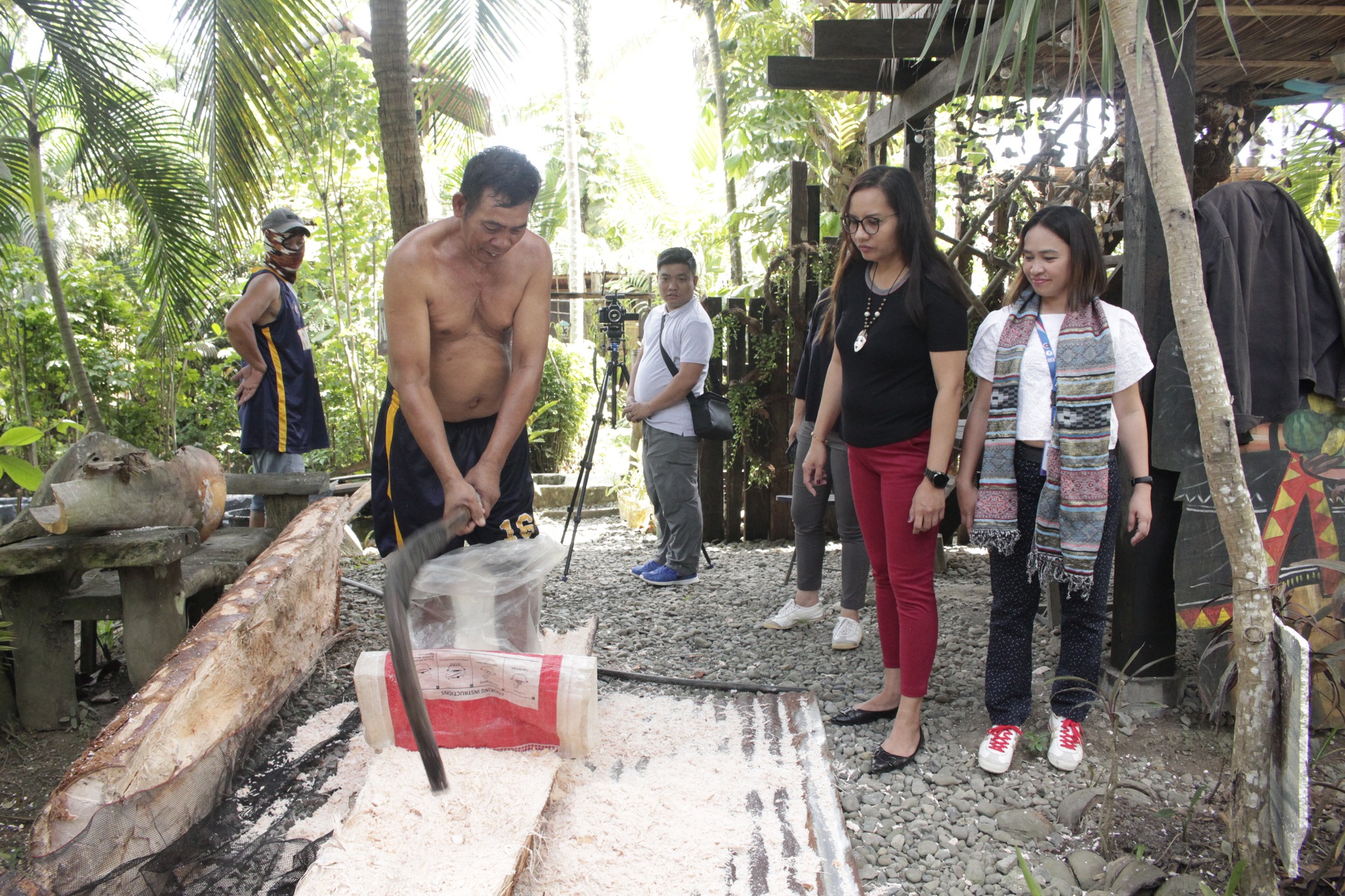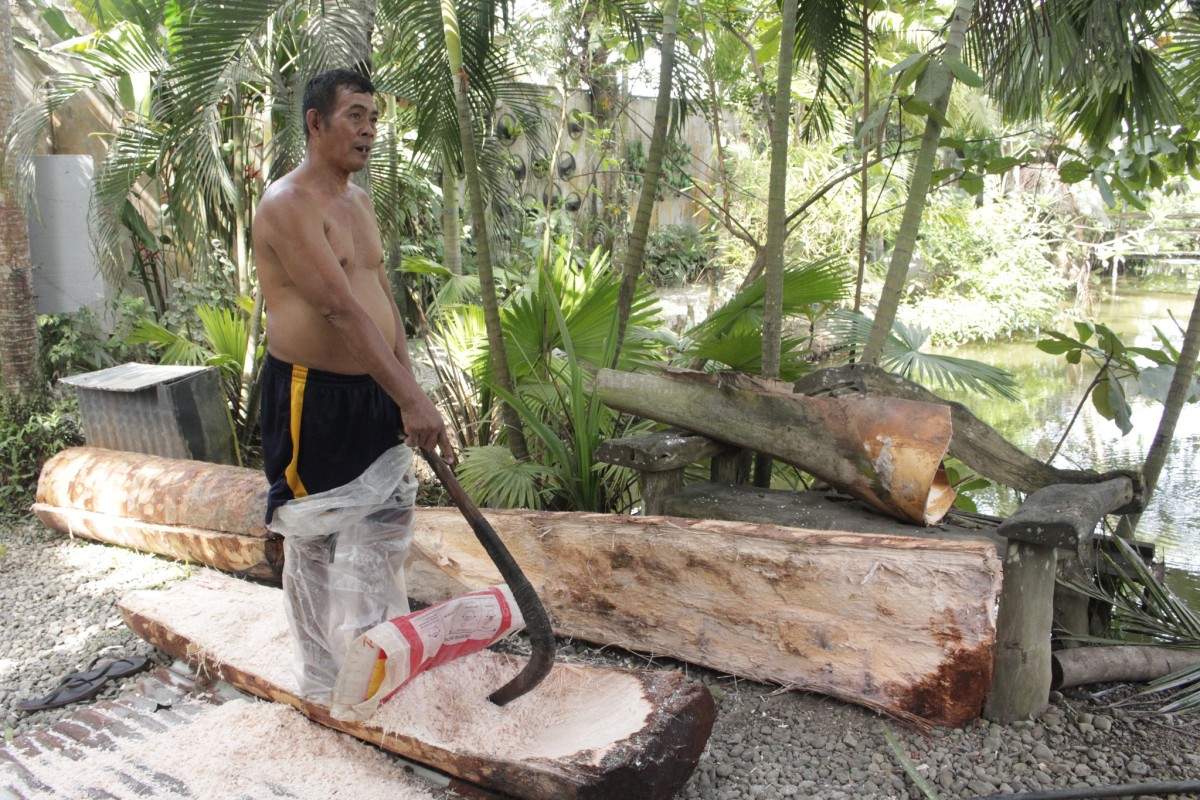Ten hours after the surprise military strike by the imperial Japanese Navy Air Service against the United States at Pearl Harbor in Honolulu on December 7, 1941, the Japanese occupation in the Philippines occurred, imposing food blockage in the entire country until 1945.
It was believed that the natives, dwellers and indigenous people residing in the marshy areas of old Butuan survived the food scarcity and hunger brought by World War II by eating Unaw.

The Lumbia Tree
Old folks would ascertain that Lumbia Tree is said to be the oldest foodplant existing even before pre-colonial period. It grows to about 30 feet high and three feet wide in diameter. At the end of its fifteen-year life cycle, right before it begins to flower, the tree is felled for the starch stored in its trunk.
Unaw is the starch made from the inner part of the Lumbia Tree which is the prime ingredient of many local delicacies in Butuan City like Tumpi, Kinabol, Dabaw-Dabaw, the natural and colorful sago mixed in delicious benignit, and above all the famous Palagsing.
The abundance of the tree is confirmed in Barangay Baan in Butuan City as it celebrates the Unaw Festival on June 27 of every year.

Palagsing, only here in Butuan City
An old chestnut goes, “You have never been to Butuan if you have not eaten the Palagsing!”
Palagsing is a Butuanon delicacy which is made in barangays Banza and Maug, two of the oldest communities of the city. This local delicacy has some similarities to the suman and budbud in other parts of the country, since it is wrapped with leaves and goes well with a cup of hot chocolate or coffee.

However, unlike suman and budbod which are made of rice, the Palagsing has a deeper flavor because it is made of Unaw, mixed well with young coconut meat and sprinkled moderately with sugar. This brown and sticky Palagsing is pretty sweet compared to the other delicacies and has a gelatinous consistency with strips of coconut meat for chewy texture.
Moreover, Barangay Banza celebrates food bounty of the place through the Palagsing Festival which is usually held on Adlaw Hong Butuan Celebration, every 2nd day of August.
Dawn of paucity
Sergio Pilo of Barangay Bobon of this city who is a tenure Unaw maker shared that Unaw is the primary source of livelihood of his family. His parents trained him and his siblings the hard work and vitality behind cutting a Lumbia Tree at dawn and the making of the Unaw until dusk with an income of P500 a day, which is enough to survive the basic needs of his family.

“Kini nga trabaho dili jud basta basta kay mogawas jud imo kusog sugod sa pagputol sa kahoy og paghimo sa Unaw nga maabtan ka ug gabie. Tungod sa kahago sa trabaho, ang mga batan.on karon dili na mutoon unsaon paghimo sa Unaw mao nang pipila nalang kami diri sa syudad kabalo motrabaho diani, ug may edad na pod mi. [This work is not ordinary because you really have to exert effort from cutting the Lumbia Tree to extracting its starch that mostly I would finish late in the evening. Because it is very strenuous, the youth now are no longer interested to learn the work that is only few of us remain to do the job and we are now aging,” Manong Pilo expressed in worry.
Manong Pilo would like to know if the government can provide a machine to the Unaw makers that can help them be more productive, increase their income and continue this livelihood.
“Mohangyo tani mi sa gobyerno kung pwede mi matagaan og makinarya para makatabang sa among pag-unaw para dili jud ni mabugto og maawala diri sa Butuan [We are seeking assistance from the government to provide us with a machine so Unaw making will not disappear in Butuan],” appealed by Manong Pilo.
When all is said and done, he is just one of the Unaw makers who is afraid that this legacy will soon vanish as the young generation is reluctant to continue the groove.
May this reach the kind heart of the government and may contribute in assuring the survival of Unaw and its contribution to food and livelihood in the community. (RLE/PIA-Caraga)




